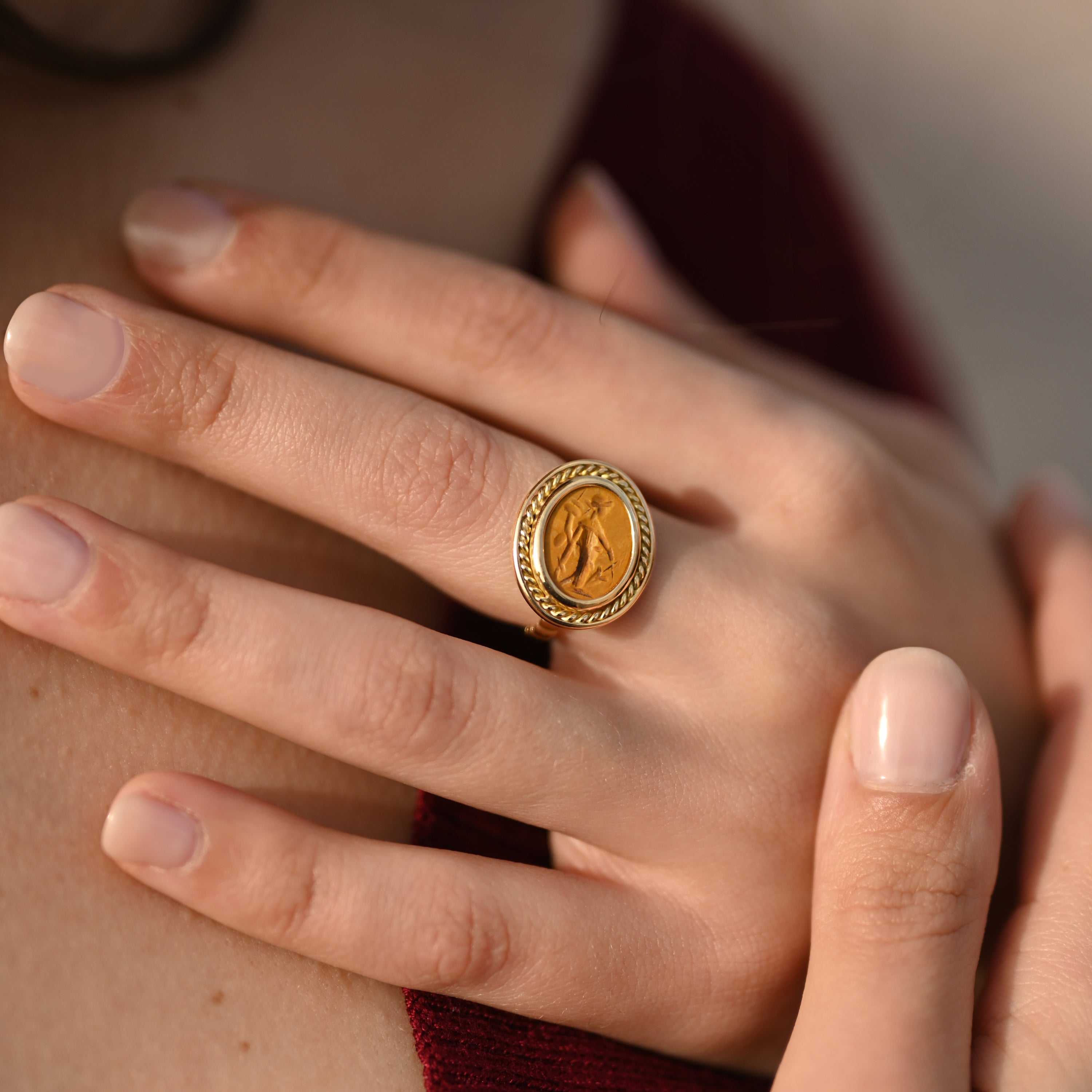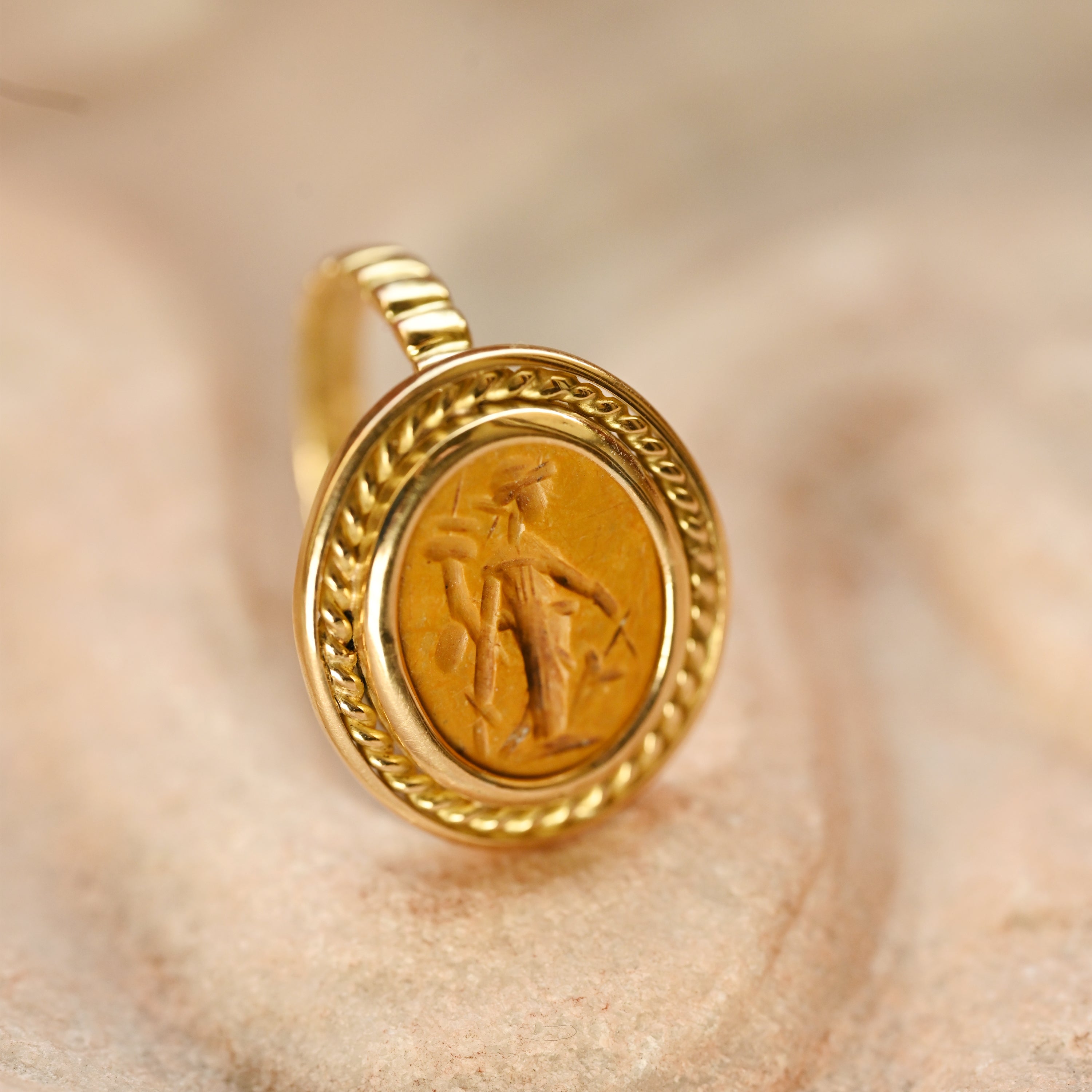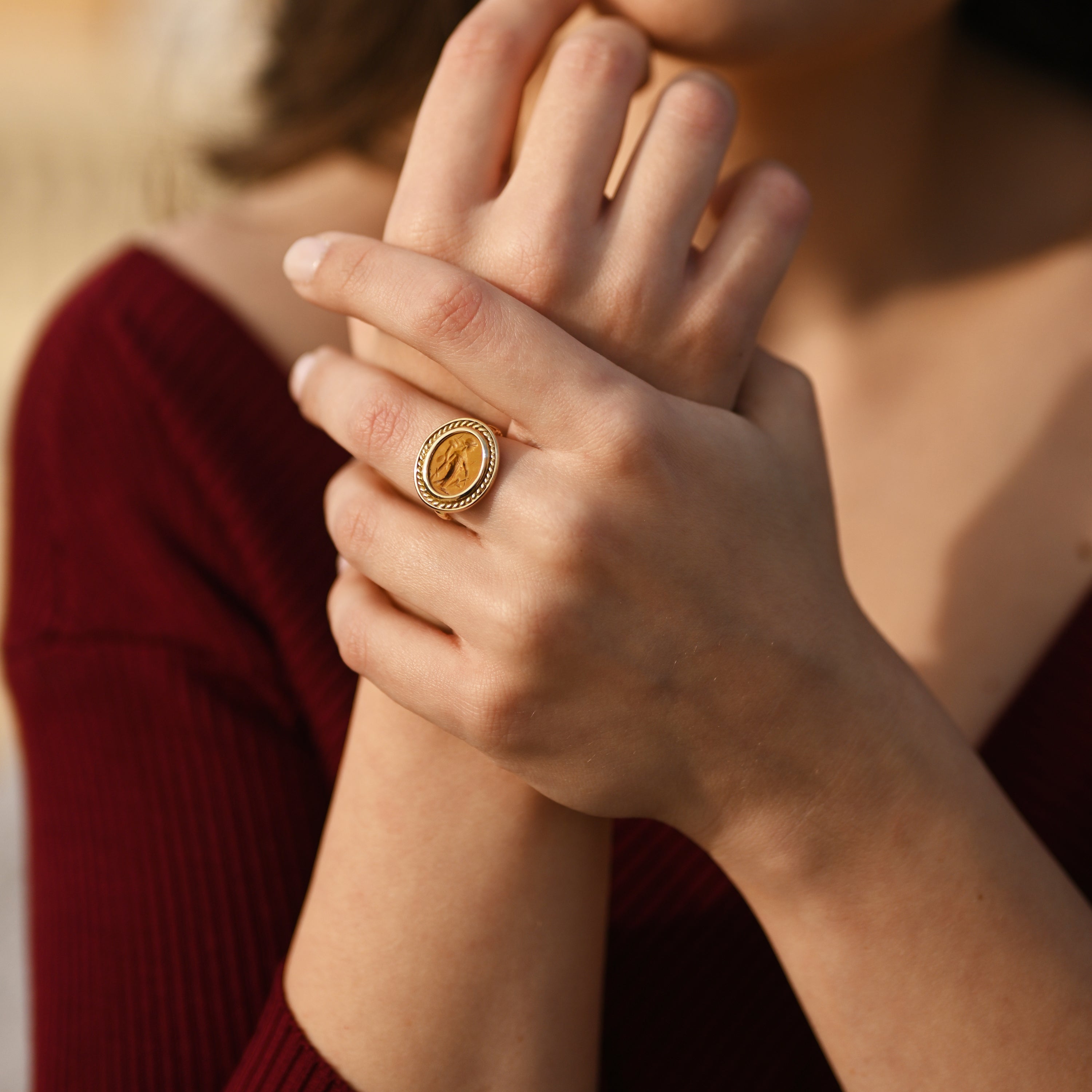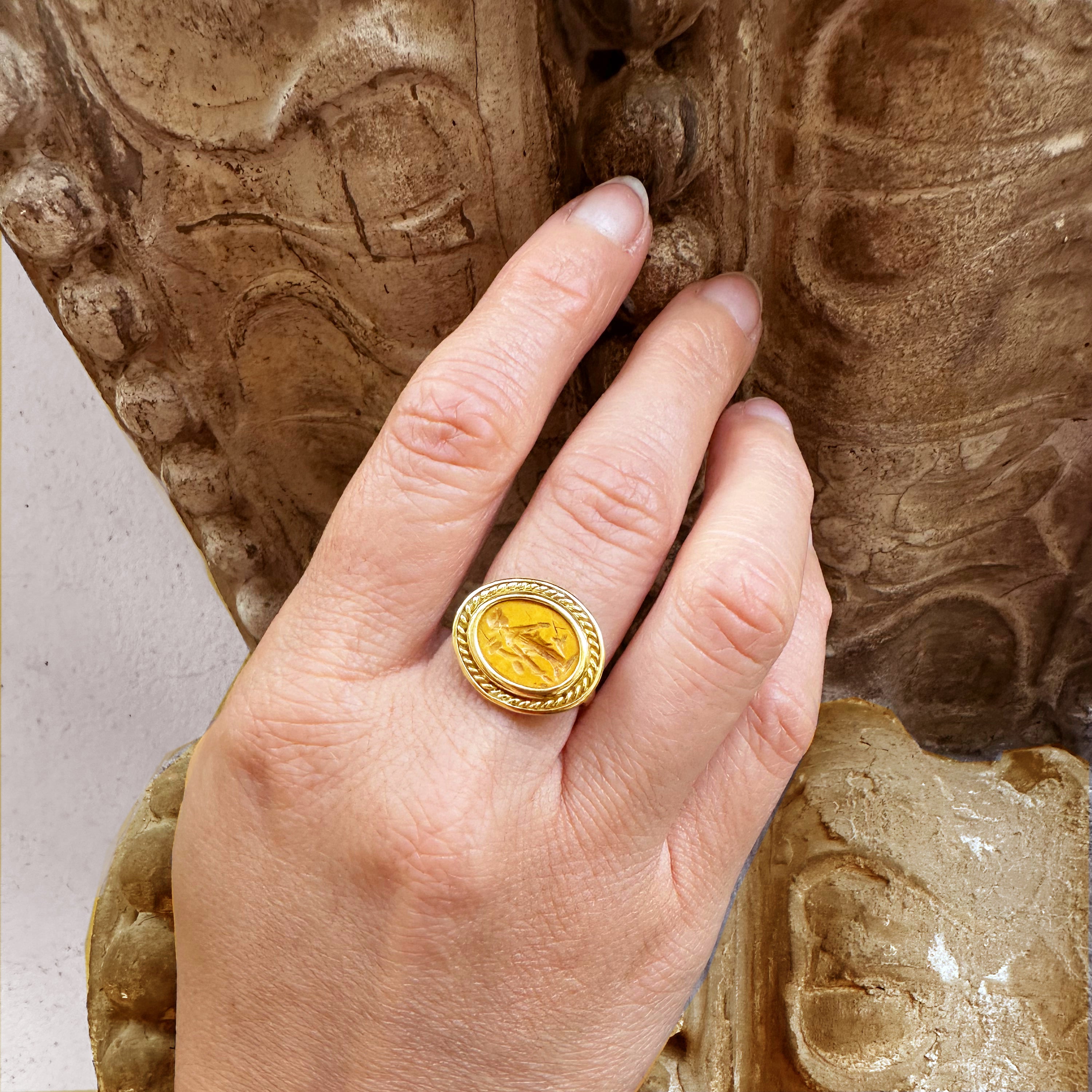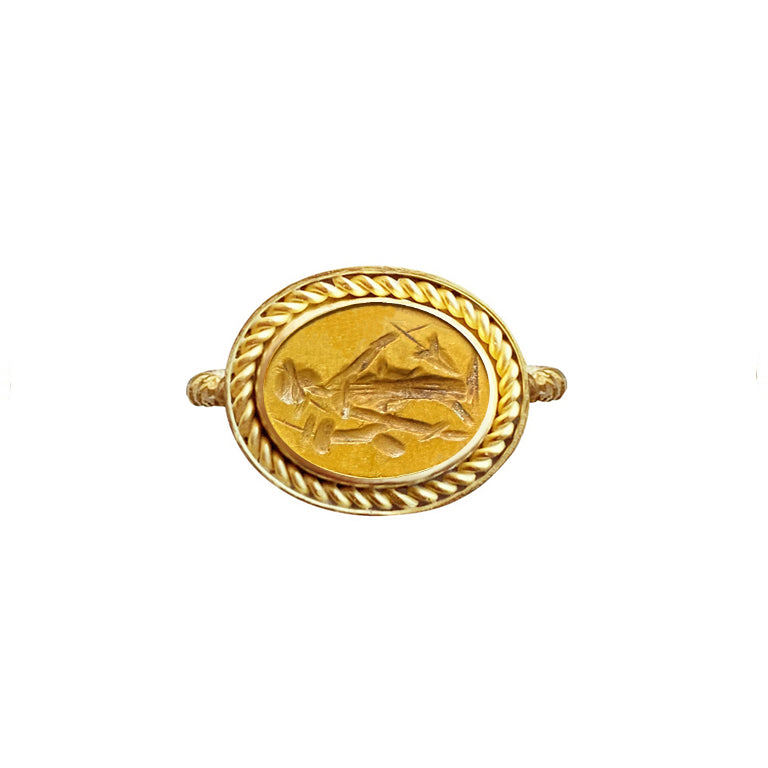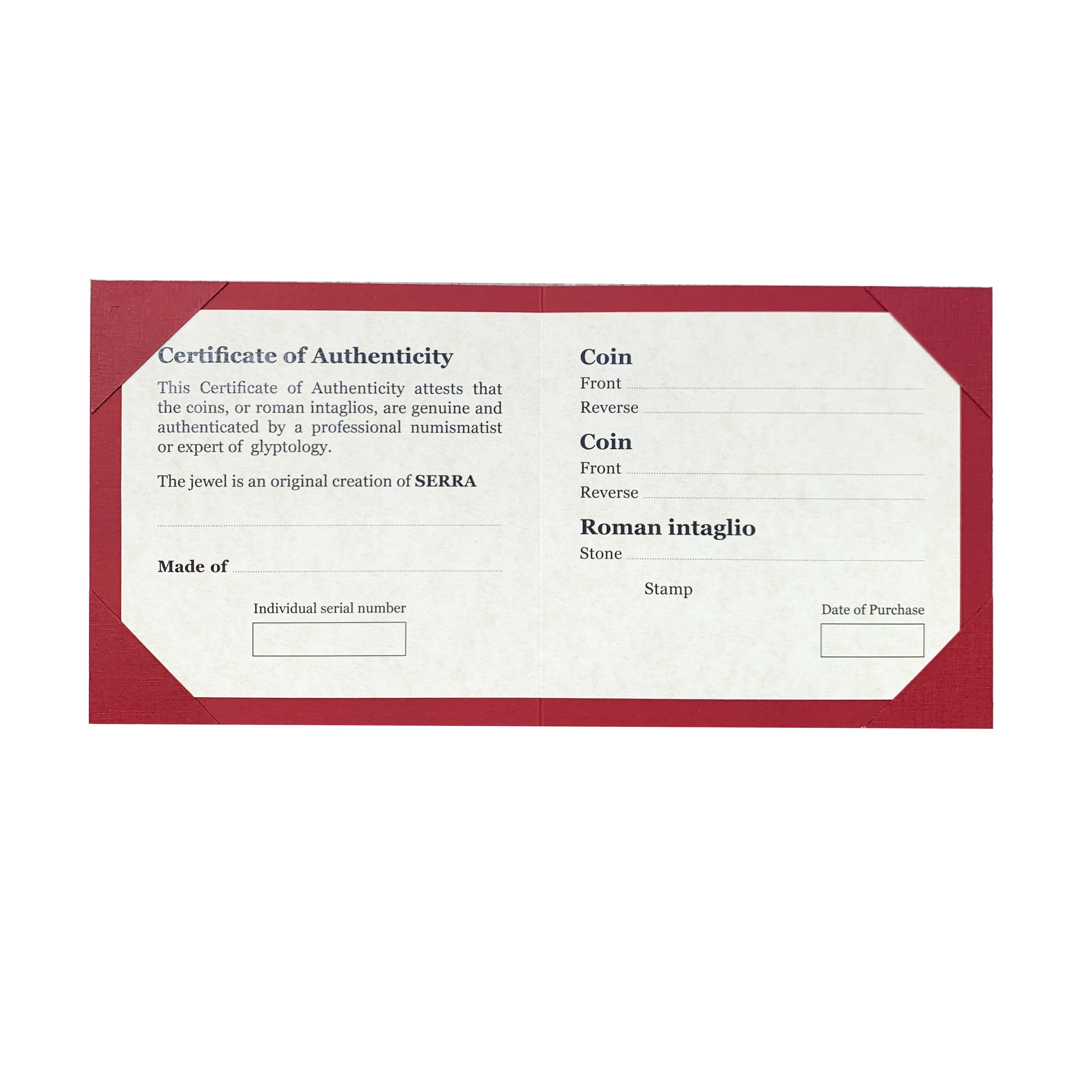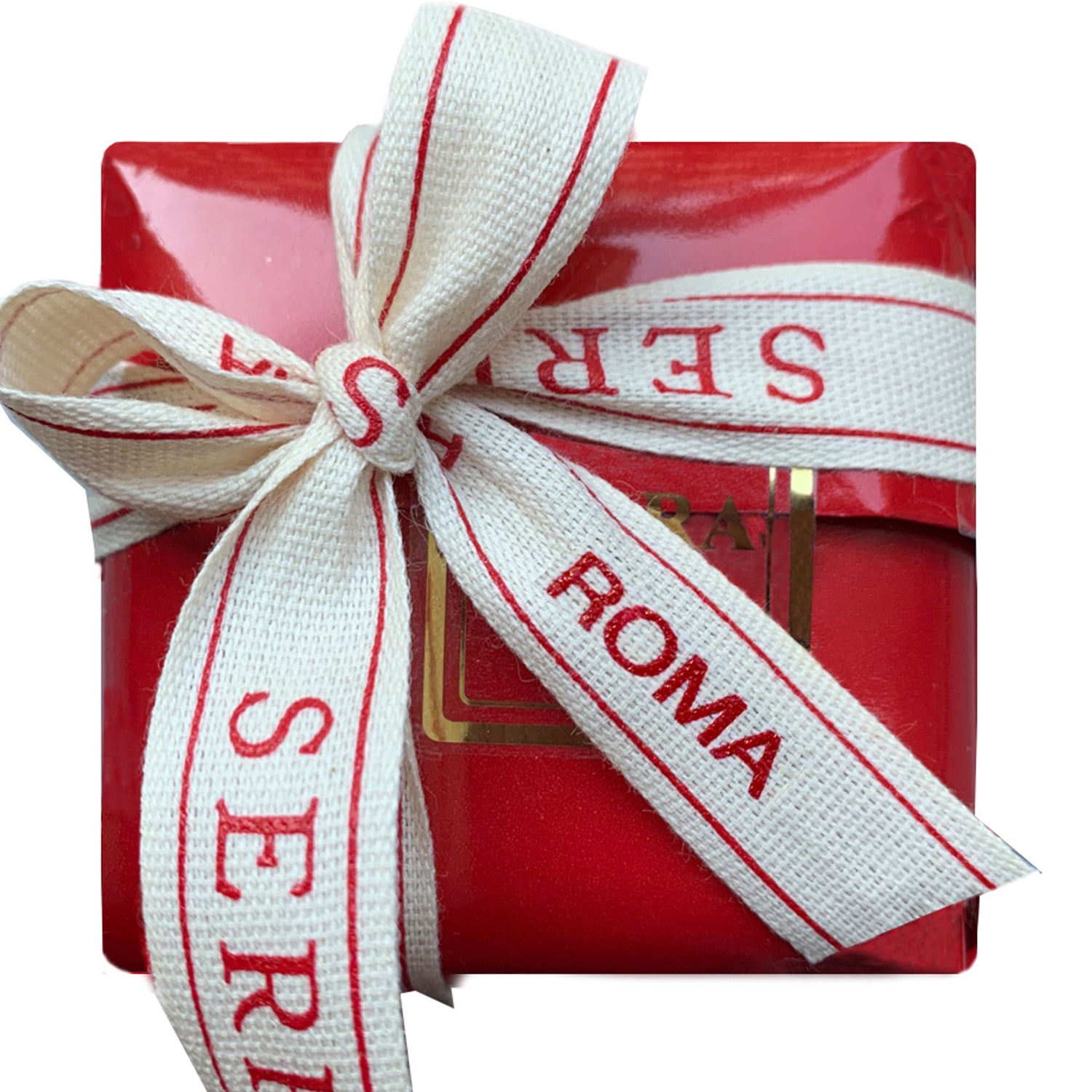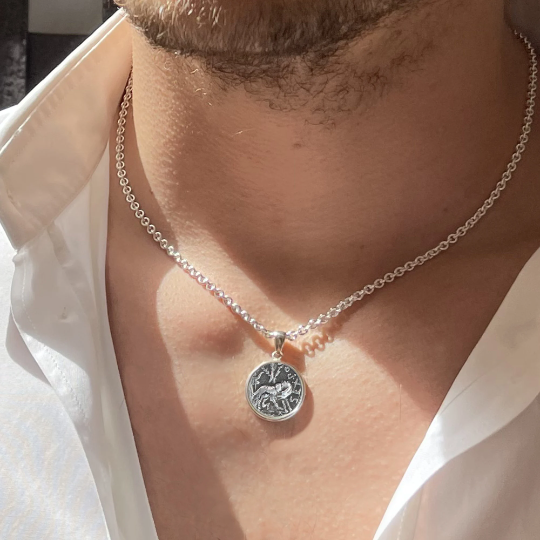GODDESS FORTUNA Authentic Ancient Roman Jasper Intaglio 1st-2nd Cent. A.D. 18 kt Gold Ring
An original carnelian from the 1st century AD graces this 18 kt gold ring, showcasing the goddess Fortuna with her quintessential attributes: the rudder and cornucopia. Adorned with the modius, a distinctive headdress, this depiction embodies the essence of Fortuna.
During the first and second centuries CE, Fortuna held a significant place in imperial Rome as a multifaceted deity. Revered under various epithets—over ninety in count—she was perceived as a singular, all-encompassing figure, adapting to diverse circumstances and societal needs. These epithets enhanced rather than diluted her essence, emphasizing her pivotal role across different strata of Roman society. She was both a benevolent and capricious force, unified in the Roman consciousness.
Initially overseeing the fates of all individuals, Fortuna garnered opulent worship. Lavish altars, festivities, and offerings were dedicated to her in pursuit of favorable fortunes. Over time, her role evolved into that of a fertility symbol. Unmarried Roman women sought her aid in securing ideal partners.
The cornucopia, symbolizing abundance and inexhaustible plenty, embodies the essence of Fortuna. Its representation of fertility, including the male aspect through phallic symbolism, aligns with her multifaceted nature.
The inclusion of poppies, depicted on this carnelian intaglio, aligns with goddess symbols, conveying notions of fertility, grace, and beauty. Paradoxically delicate yet robust, flowers reflect Fortuna's enduring strength in facing significant challenges.
Often depicted with a rudder, symbolizing her influence in steering life's course and hinting at the risks of sea voyages, Fortuna's imagery evolved. In the Flavian era, she appeared with a globe, resting her rudder upon it, symbolizing Rome's stability and victory under Fortuna's favorable gaze. However, globes, despite their symbolic significance, also signify the volatility of time, mirroring both the human lifespan and the uncertainty of empires.
Our jewelry store, Serra Roma, proudly presents an exquisite collection that beautifully honors the ancient traditions of Greek and Roman civilizations. Each piece in our collection, including authentic ancient Roman and Greek coins and intaglios, is accompanied by a certificate of authenticity, providing proof of its historical significance and origin.

